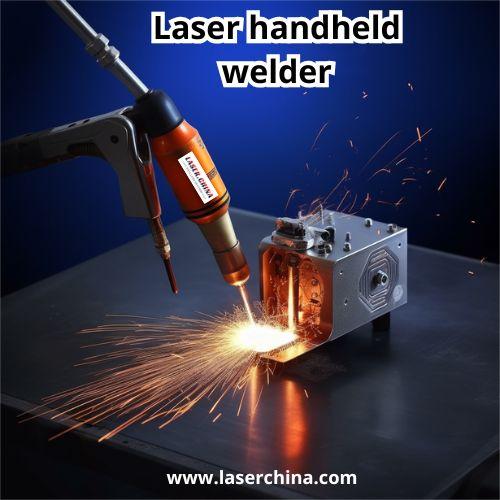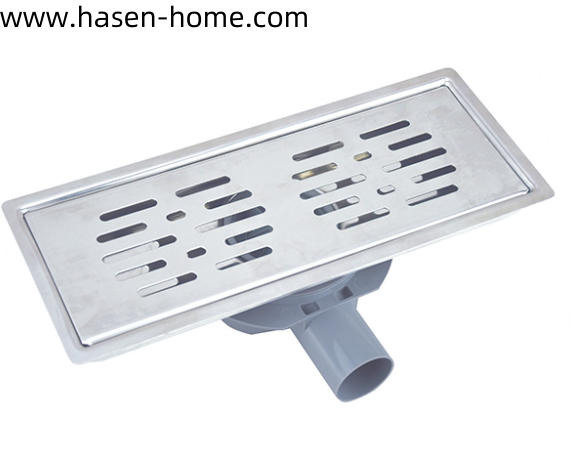Laser Handheld Welder: How LaserChina is Redefining Modern Welding Technology

Welding is at the heart of modern manufacturing, from precision automotive components to architectural structures and consumer products. Traditional methods like arc welding and TIG welding have long been the standard, but technological advances are reshaping the landscape. Among the most promising innovations is the laser handheld welder — a tool that merges high precision with flexibility.
As industries demand faster, cleaner, and more efficient processes, companies such as LaserChina are stepping forward with advanced solutions that make portable laser welding both practical and scalable. By combining compact design with cutting-edge laser engineering, this technology is helping manufacturers overcome the limitations of conventional welding while opening new opportunities for productivity.
Why the Laser Handheld Welder is Gaining Global Attention
The appeal of handheld laser welding lies in its ability to simplify operations without sacrificing quality. Unlike traditional welding methods, which often require extensive operator training, laser handheld systems are engineered with intuitive controls. This means that operators can achieve strong, precise welds with less effort and reduced risk of error.
Industries adopting this approach often report improvements in welding speed, reduced post-processing work, and minimal distortion of materials. Additionally, the technology is highly versatile, suitable for stainless steel, aluminum, copper, titanium, and various alloys. With its adaptability, the laser handheld welder has quickly become an attractive option across automotive manufacturing, aerospace engineering, metal furniture production, and electronics assembly.
Core Advantages of Laser Handheld Welding Technology
1. Precision and Quality at Scale
Laser welding delivers pinpoint accuracy, producing clean seams with minimal spatter. This level of precision reduces the need for rework and grinding, saving time on finishing. For industries where visual appearance and reliability are equally important, such as consumer electronics or luxury goods, this technology ensures both aesthetics and structural integrity.
2. Efficiency and Speed
Compared to conventional arc welding, handheld laser welding systems can operate two to three times faster. By reducing cycle times, manufacturers can scale production without compromising craftsmanship. This is particularly valuable for industries under pressure to meet growing demand while maintaining consistent output.
3. Reduced Heat Input and Material Distortion
One of the most common challenges in welding is heat-affected zones that distort or weaken the base material. The laser handheld welder minimizes heat input, protecting delicate components and reducing warping. This characteristic is especially beneficial for thin metals and high-precision assemblies.
4. Operator Comfort and Accessibility
Compact and lightweight, handheld laser welding units are ergonomically designed for extended use. Many systems feature flexible fiber optics and adjustable nozzles, making it possible to weld at different angles and hard-to-reach areas. This combination of portability and precision expands possibilities for on-site repairs and custom fabrication.
LaserChina’s Approach to Advanced Welding Solutions
Founded with a strong focus on laser technology innovation, LaserChina has built a reputation as a trusted provider of industrial laser equipment. Their handheld laser welding systems are engineered with both performance and user experience in mind.
By leveraging proprietary research, LaserChina integrates high-power fiber laser sources with smart control systems. This ensures not only reliable operation but also adaptability for varied industrial applications. Their equipment often includes modular features such as wire feeders, multi-functional nozzles, and safety mechanisms, providing clients with versatile solutions that adapt to different working environments.
LaserChina also emphasizes durability. By using robust materials and designing systems for long service life, the company ensures its products deliver consistent performance even under heavy industrial workloads. This balance of innovation, reliability, and ergonomic design distinguishes LaserChina in the competitive global market.
Applications Across Diverse Industries
The laser handheld welder has wide-ranging industrial applications due to its versatility and ease of integration. Some prominent areas where LaserChina’s systems have proven effective include:
-
Automotive Manufacturing: For car body panels, exhaust systems, and precision parts where consistency and appearance are crucial.
-
Aerospace Components: Involving lightweight alloys that demand accuracy without compromising strength.
-
Consumer Electronics: Ensuring precise and clean welds on compact metal housings and frames.
-
Metal Furniture and Decor: Allowing designers to create seamless joints for aesthetic finishes.
-
On-site Repairs: Offering portability that enables field technicians to perform high-quality repairs without transporting heavy equipment.
These applications demonstrate how handheld laser welding is not only a substitute for traditional methods but also an enabler of new design and production possibilities.
Sustainability and Energy Efficiency
Modern manufacturing is increasingly focused on sustainability, and welding is no exception. The laser handheld welder contributes to greener practices by consuming less energy compared to conventional methods. Reduced material waste, fewer consumables, and minimized need for rework all translate into a lower environmental footprint.
LaserChina’s technology further supports sustainability by promoting longer product lifespans and higher efficiency in resource use. For industries balancing performance with corporate responsibility, this represents an important step toward aligning operations with global sustainability goals.
Future Outlook: The Role of Laser Welding in Industry 4.0
As Industry 4.0 continues to transform global production, welding technologies are expected to play a pivotal role in smart manufacturing ecosystems. Laser handheld welding systems are already being enhanced with automation-ready features, remote monitoring, and digital interfaces.
LaserChina, with its focus on continuous innovation, is well positioned to integrate these technologies into its product portfolio. By bridging the gap between traditional craftsmanship and digital manufacturing, the company’s solutions pave the way for more connected, data-driven, and efficient production workflows.
Final Thoughts
The rise of the laser handheld welder reflects a broader industrial shift toward technologies that combine speed, accuracy, and versatility. By minimizing operator skill barriers and enhancing efficiency, handheld laser welding has become a valuable asset across industries from automotive to aerospace.






